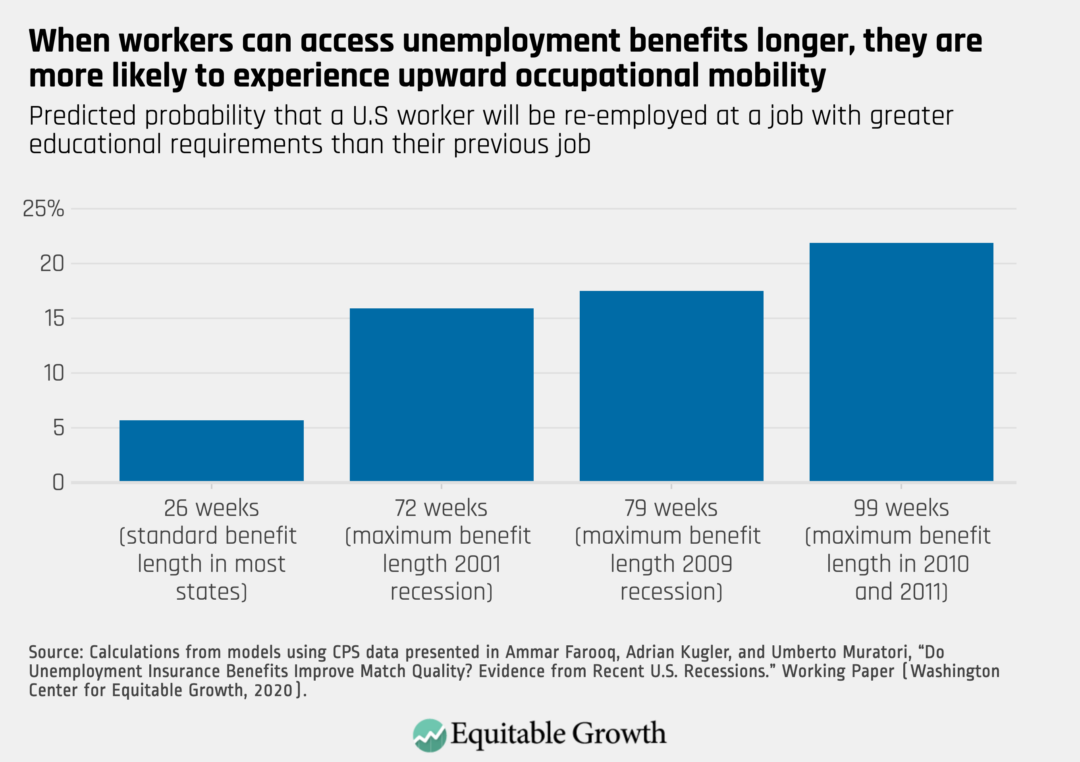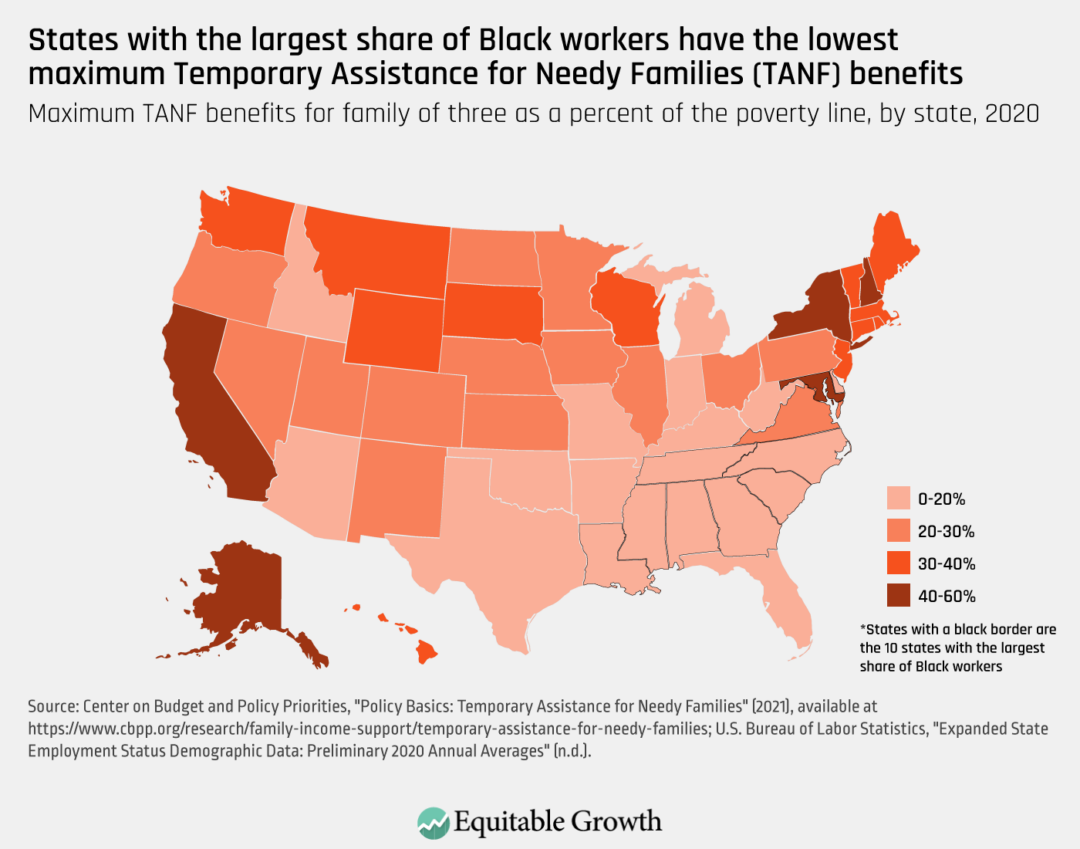Factsheet: What the research says about the economics of income support programs

Sufficient income is one of the most important components of a stable and healthy household budget. Income support programs help ensure that U.S. households have the income they need to cover the basic expenses of daily life. Some income support is delivered through direct cash transfers, including in programs such as Temporary Assistance to Needy Families, Supplemental Security Income, Social Security Disability Income, and Unemployment Insurance, while others provide essential goods such as food or housing to families, thus freeing up existing household income to be used for other purposes.
Yet the COVID-19 crisis demonstrates that existing income support infrastructure in the United States is wholly insufficient in providing relief to those who needed it.1 Pandemic-specific income supports delivered through the Coronavirus Aid, Relief, and Economic Security, or CARES, Act and related programs successfully blunted some of the worst pain of the coronavirus recession, but they failed to deliver for all who needed income support due to sustained underinvestment in these vital programs over the past half-century.2
While both common sense and a robust body of literature make clear that income support improves the economic well-being of the people who access it, it’s important not to overlook the effects these programs also have on the U.S. economy as a whole.3 This factsheet discusses the economic impacts of income support programs, who they reach, how racism prevents them from serving their economic function, and what policymakers can do about it, starting with the upcoming 2022 budget reconciliation negotiations.
The immediate economic impact of income support programs
- During recessions, income support ensures people are still able to purchase goods and services, which softens the aggregate impact of economic downturns on the U.S. economy.4 For every dollar spent on UI benefits during the Great Recession, there was an additional $1.61 in economic activity, and for every dollar spent on the Supplemental Nutrition Assistance Program, there was an additional $1.74 in economic activity.5
- Most studies find that income support from state paid leave programs increases labor force participation among mothers. Under California’s paid leave law, for example, new mothers are estimated to be 18 percentage points more likely to be working a year after the birth of their child.6
- Other income support programs for families with children also boost labor force participation among mothers. A research review by Taryn Morrissey of American University finds that providing income support to cover 10 percent of a household’s child care costs results in a 0.5 percent to 2.5 percent increase in mothers’ employment.7 Likewise, a study of the 1986 Earned Income Tax Credit expansion finds that this expanded income support resulted in a 2.8 percentage point increase in the labor force participation rate of single women with children.8
- Income supports facilitate job matching, benefitting workers who find higher-paying jobs and firms that hire workers with the right skills for the job. Recent research finds that when U.S. workers have the income they need to meet their basic needs, they can take the time to find the right job for them, rather than taking the first work opportunity that comes along. For each additional week that a worker receives Unemployment Insurance, for example, the likelihood increases that they will be re-employed at a job that requires a higher level of education than their previous job.9 (See Figure 1.)
Figure 1

- These benefits extend to those who relocate because of a partner’s job, with one study finding a $4,500 annual wage difference between female “trailing spouses”—those who relocate because of a partner’s job—who live in a state that provides income support and similar women who live in states without the policy.10 This suggests that income supports help female trailing spouses match with jobs that will use their most highly compensated skills.
The benefits of income support programs for long-run economic growth
- Income support programs develop the human capital of the next generation. For instance, an extra $1,000 from the Earned Income Tax Credit reduces the chance of a baby being born with low birth-weight—a factor hindering brain development and overall health—which, in turn, translates into better educational outcomes later in life.11 Likewise, a study on the mental and physical health outcomes of elementary school students whose parents had access to a state paid leave in California finds lower rates of attention deficit/hyperactivity disorder, obesity, ear infections, and hearing problems.12
- Investing in children’s human capital development today means more educated and higher-earning workers in the future, spurring economic growth. In adulthood, people who accessed income support from the Supplemental Nutrition Assistance Program as children have statistically significantly higher scores on the human capital index, a measure that looks at years of schooling, degrees completed, and occupation type.13
Income support programs must be strengthened to realize their full economic potential
- Strict eligibility requirements limit who is eligible for income support programs, limiting their reach. People can lose program eligibility because they get married, maintain a modest rainy day fund, or keep a reliable car. Additionally, many income support programs require a person to be employed in order to be eligible—despite the lack of income being a possible factor that is preventing a person from maintaining employment.14
- Income support benefits are difficult to access even for those who are eligible, dampening their economic impact. Many people struggle to navigate state Unemployment Insurance websites, travel to Social Security Administration field offices to complete disability applications, complete the paperwork necessary to recertify for the Supplemental Nutrition Assistance Program, and correctly document their work participation to remain eligible for the Temporary Assistance for Needy Families program.15
- When access to income support is gained, benefits amounts are often very low, preventing them from serving as effective economic stabilizers. The income support provided by the Temporary Assistance to Needy Families program, for example, leaves a family of three below half of the poverty line in almost every state and is time-limited, as its name suggests.16 Combined with eligibility and access limitations, this prevents the use of this income support from increasing during recessions.17
Structural racism drives the weaknesses in U.S. income support programs
- While some assume that the U.S. income support system is weak because few people need it, most people need income support at some point in their lives. Americans have a 54 percent chance of experiencing poverty at least once during adulthood—more than the chance of having appendicitis or getting divorced over the course of a lifetime.18
- In fact, almost everyone in every racial category uses income supports at some point. An Urban Institute study finds that in any given month, nearly 1 in 5 people benefit from SNAP benefits, Supplemental Security Income, the TANF program, public or subsidized housing, the Women, Infants, and Children, or WIC, program, or the Child Care and Development Fund. A U.S. Treasury Department analysis also finds that nearly every single U.S. household receives some form of income support, when one considers Medicare and Social Security.19
- A large body of academic work shows that racism weakens income support programs.20 Research that compares social infrastructure in European countries with that of the United States finds that racism is a major reason why the United States spends less on income support than peer nations.21
- Within the United States, states with higher proportions of Black residents also provide less income support than other states. Research that compares U.S. states finds that states with a greater share of Black residents provide lower levels of income support through the Temporary Assistance to Needy Families program than states with fewer Black residents.22 (See Figure 2.)
Figure 2

Weaknesses in the U.S. system of income supports constrain and limit the overall strength of the U.S. economy, unnecessarily deepening recessions, depressing labor force participation, and harming future growth potential by underinvesting in the human capital of the next generation of workers. The inability to access income support programs to weather unexpected storms has serious consequences, especially for many workers of color, women, and their families. Indeed, the coronavirus recession exposed already-deep inequalities in access to income supports along lines of race and gender.23
Policy solutions
There are several options for policymakers who want to remedy these weaknesses and build a system of income supports that will fulfill its potential to help the economy grow, including:
- Enact a comprehensive paid family and medical leave program.
- Extend the monthly, fully refundable Child Tax Credit.
- Reform our Unemployment Insurance system so that all workers can receive adequate benefits regardless of the state in which they live.24
- Strengthen food, housing, and child care assistance programs.
The upcoming budget reconciliation negotiations offer a promising opportunity to enact these and other reforms to U.S. social infrastructure, including income support programs. These actions would not only benefit those U.S. workers and their families who need help the most, but also bolster the overall U.S. economy as it continues to recover from the coronavirus recession.
For more information, see Equitable Growth’s issue brief, “Weak income support infrastructure harms U.S. workers and their families and constrains economic growth.”
End Notes
1. Alix Gould-Werth, “The only thing better than strengthening federal social supports now to prevent a coronavirus recession is strengthening them forever” (Washington: Washington Center for Equitable Growth, 2020), available at https://equitablegrowth.org/the-only-thing-better-than-strengthening-federal-social-supports-now-to-prevent-a-coronavirus-recession-is-strengthening-them-forever/.
2. Zachary Parolin and others, “Monthly Poverty Rates in the United States during the COVID-19 Pandemic” (New York: Center on Poverty & Social Policy, 2020), available at https://www.povertycenter.columbia.edu/news-internal/2020/covid-projecting-monthly-poverty; Amanda Fischer and Alix Gould-Werth, “Broken plumbing: How systems for delivering economic relief in response to the coronavirus recession failed the U.S. economy” (Washington: Washington Center for Equitable Growth, 2020), available at https://equitablegrowth.org/broken-plumbing-how-systems-for-delivering-economic-relief-in-response-to-the-coronavirus-recession-failed-the-u-s-economy/; Shawn Donnan and Reade Pickert, “U.S. Unemployment Rescue Left at Least 9 Million Without Help,” Bloomberg Businessweek, June 25, 2021, available at https://www.bloomberg.com/news/features/2021-06-25/u-s-unemployment-at-least-9-million-americans-didn-t-receive-any-benefits.
3. Arloc Sherman, Danilo Trisi, and Sharon Parrott. “Various Supports for Low-Income Families Reduce Poverty and Have Long-Term Positive Effects On Families and Children” (Washington: Center on Budget and Policy Priorities, 2021), available at https://www.cbpp.org/research/various-supports-for-low-income-families-reduce-poverty-and-have-long-term-positive.
4. Gabriel Chodorow-Reich and John Coglianese, “Unemployment insurance and macroeconomic stabilization” (Washington: The Brookings Institution, 2019), available at https://www.brookings.edu/research/unemployment-insurance-and-macroeconomic-stabilization/.
5. Alan S. Blinder and Mark Zandi, “The Financial Crisis: Lessons for the Next One” (Washington: Center on Budget and Policy Priorities, 2015), available at https://www.cbpp.org/research/economy/the-financial-crisis-lessons-for-the-next-one; Hilary Hoynes and Diane Whitmore Schanzenbach, “Strengthening SNAP as an Automatic Stabilizer” (Washington: The Hamilton Project, 2019), available at https://www.hamiltonproject.org/assets/files/HoynesSchanzenbach_web_20190506.pdf.
6. Charles L. Baum II and Christopher J. Ruhm, “The Effects of Paid Family Leave in California on Labor Market Outcomes,” Journal of Policy Analysis and Management 35 (2) (2016), available at https://onlinelibrary.wiley.com/doi/abs/10.1002/pam.21894.
7. Taryn W. Morrissey, “Child Care and Parent Labor Force Participation: A Review of the Research Literature,” Review of Economics of the Household 15 (1) (2017): 1–24, available at https://doi.org/10.1007/s11150-016-9331-3.
8. Nada Eissa and Jeffrey B. Liebman, “Labor Supply Response to the Earned Income Tax Credit,” The Quarterly Journal of Economics 111 (2) (1996): 605–37, available at https://doi.org/10.2307/2946689.
9. Alix Gould-Werth, “The long-run implications of extending unemployment benefits in the United States for workers, firms, and the economy” (Washington: Washington Center for Equitable Growth, 2020), available at https://equitablegrowth.org/the-long-run-implications-of-extending-unemployment-benefits-in-the-united-states-for-workers-firms-and-the-economy/.
10. Joanna Venator, “Moving with Two Careers Is Hard, but Unemployment Insurance for Trailing Spouses Can Help” (Washington: Washington Center for Equitable Growth, 2021), available at https://equitablegrowth.org/moving-with-two-careers-is-hard-but-unemployment-insurance-for-trailing-spouses-can-help/.
11. Jesse Rothstein, “The Earned Income Tax Credit” (Washington: Washington Center for Equitable Growth, 2015) available at http://www.equitablegrowth.org/the-earned-income-tax-credit/; Hilary Hoynes, Doug Miller, and David Simon, “Income, the Earned Income Tax Credit, and Infant Health,” American Economic Journal: Economic Policy 7 (1) (2015): 172–211, available at https://doi.org/10.1257/pol.20120179.
12. Shirlee Lichtman-Sadot and Neryvia Pillay Bell, “Child Health in Elementary School Following California’s Paid Family Leave Program,” Journal of Policy Analysis and Management 36 (4) (2017): 790–827, available at https://doi.org/10.1002/pam.22012.
13. Martha Bailey and others, “New working paper shows long-term U.S. economic and health benefits of the Supplemental Nutrition Assistance Program” (Washington: Washington Center for Equitable Growth, 2020), available at https://equitablegrowth.org/new-working-paper-shows-long-term-u-s-economic-and-health-benefits-of-the-supplemental-nutrition-assistance-program/.
14. Stacy West and others, “Preliminary Analysis: SEED’s First Year” (Stockton, CA: Stockton Economic Empowerment Demonstration, 2021), available at https://static1.squarespace.com/static/6039d612b17d055cac14070f/t/6050294a1212aa40fdaf773a/1615866187890/SEED_Preliminary+Analysis-SEEDs+First+Year_Final+Report_Individual+Pages+.pdf.
15. Hilary Hoynes and Nicole Maestas, “The Effect of Attorney and Non-Attorney Representation on the Initial Disability Determination Process.” Working Paper (National Bureau of Economic Research, 2016), available at https://www.nber.org/programs-projects/projects-and-centers/retirement-and-disability-research-center/center-papers/drc-nb16-15; Michelle Derr and Elizabeth Brown, “Improving Program Engagement of TANF Families: Understanding Participation and Those with Reported Zero Hours of Participation in Work Activities” (Princeton, NJ: Mathematica, 2015), available at https://www.mathematica.org/publications/improving-program-engagement-of-tanf-families-understanding-participation-and-those-with-reported.
16. Center on Budget and Policy Priorities, “Policy Basics: Temporary Assistance for Needy Families” (2021), available at https://www.cbpp.org/research/family-income-support/temporary-assistance-for-needy-families.
17. Marianne Bitler and Hilary Hoynes, “The More Things Change, the More They Stay the Same? The Safety Net and Poverty in the Great Recession.” Working Paper 19449 (National Bureau of Economic Research, 2013), available at https://doi.org/10.3386/w19449.
18. Mark R. Rank and Thomas A. Hirschl, “Poverty across the Life Cycle: Evidence from the PSID,” Journal of Policy Analysis and Management 20 (4) (2001): 737–755, available at https://onlinelibrary.wiley.com/doi/epdf/10.1002/pam.1026; Jane E. Brody, “A Superfluous Organ Can Still Cause Trouble,” The New York Times, November 16, 2004, available at https://www.nytimes.com/2004/11/16/health/a-superfluous-organ-can-still-cause-trouble.html; Rose M. Kreider and Renee Ellis, “Number, Timing, and Duration of Marriages and Divorces: 2009” (Washington: U.S. Census Bureau, 2011), available at https://www.census.gov/prod/2011pubs/p70-125.pdf.
19. Sarah Minton and Linda Giannarelli, “Five Things You May Not Know about the US Social Safety Net” (Washington: Urban Institute, 2019), available at https://www.urban.org/sites/default/files/publication/99674/five_things_you_may_not_know_about_the_us_social_safety_net_1.pdf; Theodore Figinski, “Issue Brief Four: The Distribution and Evolution of the Social Safety Net and Social Insurance Benefits: 1990 to 2014” (Washington: U.S. Department of the Treasury, 2017), available at https://www.treasury.gov/resource-center/economic-policy/Documents/The%20Economic%20Security%20of%20American%20Households-%20the%20Safety%20Net.pdf.
20. Madison Allen, “Racism in Public Benefit Programs: Where Do We Go from Here?” (Washington: CLASP, 2020), available at https://www.clasp.org/blog/racism-public-benefit-programs-where-do-we-go-here.
21. Alberto F. Alesina, Edward L. Glaeser, and Bruce Sacerdote, “Why Doesn’t The US Have a European-Style Welfare State?” (Harvard Institute of Economic Research, 2001), available at https://doi.org/10.2139/ssrn.290047.
22. Liz Hipple and Alix Gould-Werth, “Weak Income Support Infrastructure Harms U.S. Workers and Their Families and Constrains Economic Growth” (Washington: Washington Center for Equitable Growth, 2021). https://equitablegrowth.org/weak-income-support-infrastructure-harms-u-s-workers-and-their-families-and-constrains-economic-growth/.
23. TIME’S UP Foundation, “Foundations for a Just and Inclusive Recovery” (2021), available at https://timesupfoundation.org/work/times-up-impact-lab/times-up-measure-up/foundations-for-a-just-and-inclusive-recovery/.
24. Josh Bivens and others, “Reforming Unemployment Insurance: Stabilizing a System in Crisis and Laying the Foundation for Equity” (Washington: Economic Policy Institute, 2021), available at https://www.epi.org/publication/unemployment-insurance-reform/.







